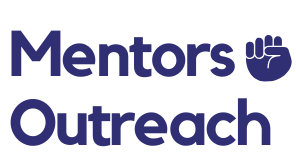When it comes to learning new skills in the workplace, over half of employees learn from their co-workers, according to one study on workplace learning. Yet, many organizations do not have a formal peer-to-peer learning program where co-workers can network and learn from each other.
The reality is that most training or learning opportunities for employees are done through classes, on-the-job instruction, and workshops. Harvard Business Review researchers believe one of the main reasons there are no formal peer-to-peer learning programs in the workplace is the perception that experts from outside the organization are more qualified. That means that many companies are overlooking the power of peer-to-peer interactions. There are many good reasons to encourage peer-to-peer learning at your company including the ability to use the talent that is already employed at your organization.
Why formalize peer-to-peer learning
Although there is a perception that those outside an organization are the best teachers, there are many good reasons to encourage peer-to-peer learning inside your organization. These include:
Qualified talent - Most organizations make an effort to hire qualified candidates who have high skill levels. By formalizing peer-to-peer learning inside your organization you can benefit from these talented individuals. Allowing peers to share their knowledge with each other and build new skills will be an asset to your business. It can also create a teamwork atmosphere and improve employee engagement.
Cost - Hiring outside experts to hold classroom training or workshops can be expensive. However, by utilizing the talent you have within your organization, you can cut down the cost. Creating a peer-to-peer learning program at your company can help employees develop new skills while saving money.
Learning - Research has shown that co-workers learn well from each other. This may stem from the fact that there is more of a willingness to share with those who have no authority over you. With peer-to-peer situations, people are more willing to make mistakes and then learn from them. Therefore, developing a peer-to-peer learning program within your workplace takes advantage of the natural way we learn.
Communication - Peer-to-peer learning situations are also opportunities for employees to develop better communication tools. In these scenarios, employees learn how to give and receive constructive feedback. These skills can be valuable ones as they move throughout your organization and their careers.
How to develop peer-to-peer learning programs
Developing a peer-to-peer learning program at your workplace is similar to creating a workplace mentoring program. You will need to determine the type of program that will work best for your company. Some peer-to-peer learning programs connect individuals in a mentoring-like situation where one peer works with another. There are also opportunities to connect a group of employees together or more of a classroom teaching style where an employee shares with their peers some of the things they have been learning.
Regardless of the style of program that you would like to create there are some steps that you need to take to ensure it is successful.
- Make a plan - It is important to write down your peer-to-peer learning program strategy. This should include the outcomes your organization wants to see from the program as well as the KPIs that will be used to measure the progress of participants and the learning program in general.
- Find a program manager - All style of peer-to-peer learning programs will need a manager to keep things on track. This individual should not be involved in the program directly but rather someone who can be present to move the learning program along. For example, they may organize the sessions or facilitate the conversation.
- Create some rules - Establish boundaries and a code of conduct within the group by having a few rules to guide interactions. The key is to create an atmosphere where each employee feels safe to share their experiences and failures and to receive constructive feedback.
- Get feedback - Peer-to-peer learning programs should not be stagnant. Rather, by asking for feedback from participants your program manager or leadership team should look for ways to improve the program. You don’t have to wait until the learning process is over, you can ask participants to give you feedback during the process and then again after they have completed the program. The more information you have, the better.
There are some other ways that you help participants get the most out of your workplace peer-to-peer program including:
- Extra training: consider having participants undergo leadership or communication training prior to participating in the peer-to-peer learning program. This can help them get the most out of any group discussions and feedback opportunities.
- Planning your peer-to-peer matches: creating the right match among employees is one of the most important elements of successful learning programs. You can treat peer-to-peer learning programs the same way you would a mentoring one. Using software like Together can help you find a good peer-to-peer match. By entering application information and other employee data, the program’s algorithm can decipher those participants who are most likely to get along and work well together.
- Promotion: you can create one of the best peer-to-peer learning programs but if no one in your organization knows about it, they won’t benefit from it. It is important to have the support of leadership and other employees when you promote the program. Ensure that there are different channels of communication with your employees that you are sharing the news about your peer-to-peer learning opportunities.
Conclusion
Providing peer-to-peer learning opportunities in your organization is a great way to improve employee engagement and reduce turnover. It also helps you capitalize on the talent you already have by using current employees to help others in your organization to develop new skills. While the prevailing perception that outside experts are more qualified to lead learning opportunities, studies have shown that employees actually learn better from their co-workers. Once you are able to harness the power of peer-to-peer learning, you can be sure that your employees and your organization will experience growth.

